For all eternity | NOVEMBER 21
Among the over 1,400 German synagogues destroyed on and around the pogrom night of November 9th to 10th (later known as “Kristallnacht” or “Night of Broken Glass”) was the Semper Synagogue in Dresden, named after its architect. While neo-Romanesque on the outside, the building featured an interior in Moorish Revival Style – a design imitated by numerous other architects of synagogues in Germany. When the building was burnt down by both the SA and SS, 98 years had passed since its festive opening in 1840, at which Rabbi Zacharias Frankel had consecrated it to the service of God “for all eternity” and extolled the “respect for religious freedom inspiring this people.”
What is already bad gets worse | NOVEMBER 19
The Intrators had been forced to flee once before: the anti-Jewish climate in their native country, Poland, had caused Rachel (Rosa) and Jakob in 1905 to make Berlin their home. Their son Alexander, born the same year, later became a successful concert violinist. Gerhard, five years his junior, went to law school, but the Nazis had hardly been brought to power when they began to systematically push Jews out of the legal professions. In light of the hopelessness of pursuing a juridical career in Germany, the 27-year-old emigrated to the US in 1937. Now he was making massive efforts to bring his parents. On November 19th, his father reported on the arrival of the affidavit which was needed for immigration. However, he added, they did not expect to receive their visas any time soon. Meanwhile, their circle of relatives and friends was getting smaller and smaller. Some were being forced by the Nazis to return to Poland, others simply disappeared.
Where is Paul Weiner? | NOVEMBER 18
Willi Jonas and his wife Hilde owned a shoe shop in tranquil Basel, Switzerland. Deeply worried about their relatives in Germany, Willi Jonas sent his Swiss chauffeur to sound out the situation. In a November 18th, 1938 letter, the couple tell emigré friends in America about their loved ones’ experiences during and since the night of pogroms (later known as “Kristallnacht” or “Night of Broken Glass”). Louis Jonas, a cattle dealer in Waldbreitbach near Neuwied, has gotten away without material losses. However, after having had to spend 4 days in jail and being released only due to the fact that he is above 50, all he wants is to get out. The news from Worms is even more alarming: Paul Weiner has been taken to a concentration camp and nobody has seen fit to notify his wife, Berta (née Jonas), as to which. The couple’s home was almost entirely wrecked, some of their property stolen.
No reprieve | NOVEMBER 17
Whoever had hoped that peace and quiet would return after the pogroms on and through the night of November 9th to 10th (later known as “Kristallnacht” or “Night of Broken Glass”) had been mistaken. In its November 17th dispatch, the Jewish Telegraphic Agency gives account of a new wave of arrests and violence. The initial round of violence had been orchestrated to look like a spontaneous outburst of popular rage after the assassination of an employee at the German Embassy in Paris, Ernst vom Rath, at the hand of a 17-year-old Jew. The pogrom was followed by a series of legislative measures eliminating Jews from commercial life in Germany and forcing them to “restore the streetscape” after the arson attacks on synagogues and the destruction of Jewish businesses. Apparently, the diplomat’s funeral in Düsseldorf was now serving as a subterfuge for renewed violence. The US consulate in Berlin was flooded by Jews seeking asylum for fear of additional assaults—in vain, as the article states.
Just help—no matter from where | NOVEMBER 16
Martha Lippmann, the widow of a wool merchant in Stolzenau/Weser in Lower Saxony, and her mother were the last family members left behind in Germany when the November pogroms (later known as “Kristallnacht” or “Night of Broken Glass”) ravaged German Jewry. Her daughter, Gertrude, fled to Belgium; her older son, Erich, to America; and her younger son, Hans Martin, to England. News of the wave of anti-Jewish violence increased the urgency with which emigrants attempted to intercede on behalf of loved ones left behind in Germany. In a letter dated Nov. 16th, Max Stern, Gertrude’s husband, tells Erich about a planned appointment with a Belgian lawyer on behalf of Martha Lippmann, the goal of which is to obtain a temporary visa for her. Erich himself had contacted William Dodd, the former US Ambassador to Germany, thanks to whom he himself had made it to the US. But so far this appeal was to no avail.
A sensitive eccentric | NOVEMBER 15
In this watercolor portrait of a young girl, we do not see the artist John Hoexter’s familiar acerbity but rather a much gentler side. The Expressionist and Dadaist was a leftist activist and idealist and was not very good at making money. For years he contributed to the magazine “Der blutige Ernst” (“Bloody Earnest”), which disseminated undogmatic leftist thought with the help of first-rate contributors who were not paid for their efforts. Hoexter’s financial situation also was not helped by the fact that in trying to control his asthma, he had gotten addicted to morphine early in life. In addition to his considerable artistic talent, he was forced to develop his skills as a “shnorrer.” He was at home in the Bohemian circles frequenting places like the “Cafe Monopol” and the “Romanisches Cafe.” After the Nazis were handed power in 1933, Hoexter’s leftist circle of friends shrank more and more, which, along with the ongoing debasement of Jews by the regime, did not fail to take a toll on him. Under the impact of the violence experienced during the night of pogroms (later known as “Kristallnacht” or “Night of Broken Glass”) Hoexter committed suicide on November 15th.
Shattered splendor | NOVEMBER 14
On August 13th, 1869, the synagogue on Michelsberg in Wiesbaden had been officially opened in a festive ceremony. The building was meant to serve the increased spatial needs of the congregation but also testified to its increased wealth and civic self-assurance. In the presence of representatives of other faith communities, Rabbi Süskind had referred to the liberal house of worship as a “planting ground for patriotic virtues” which was to prove its unifying power not only within the circle of one’s own co-religionists, but “also in the wider circles of humanity.” After the pogrom that took place through the night of November 9th into 10th, 1938 (later known as “Kristallnacht” or “Night of Broken Glass”), all that was left of the magnificent building in Moorish-Byzantine style was the external wall. The interior was entirely gutted.
A slide back to barbarism | NOVEMBER 13
As the Jewish Telegraphic Agency would have it, the English were united in their dismay about the anti-Jewish violence in Germany. Expressing their “indignation and disgust” and referring to the recent anti-Jewish violence in Germany as a “slide back to barbarism” and “inhuman fury,” they condemned the pogroms orchestrated by the Nazis. Some, like the Sunday Times and Sir Archibald Sinclair, leader of the Liberal Party, used the events as an opportunity to reinforce the need for a national home for the Jews.
Not a trace of uncle Arthur | NOVEMBER 12
Harry Kranner was a boy of 12 when the Nazis staged a wave of anti-Jewish violence unprecedented in scope and intensity – purportedly a “spontaneous outburst of popular rage” in reaction to the murder of an employee of the German embassy in Paris at the hand of a young Jew. However, Harry’s diary entries show that he was keenly aware of the events around him. In the early morning of November 10th, when the violent events of the night spilled over from Germany into Austria, two Gestapo officers had come to the family’s home in Vienna – ostensibly in search of weapons. Harry understood how extraordinarily lucky he was to have gotten away with nothing more than a scare. He had heard about Jews being locked into or out of their apartments. But one big worry remained: by November 12th, there was still no trace of his uncle Arthur, who had been arrested along with thousands of other Jews. Following a news report that all arrestees were to be deported to the Dachau and Mauthausen concentration camps from the Vienna Westbahnhof, Harry’s father and aunt rushed there, hoping to find uncle Arthur, but to no avail. Meanwhile, it was reported that the Jews were going to be charged a hefty penalty for the violence to which they themselves had fallen victim.
Arson | NOVEMBER 11
As Jews in Chemnitz were struggling to come to terms with the brutal violence they had experienced two days before – the magnificent synagogue had been set on fire and destroyed during the November Pogroms, in the night from November 9 to 10 (later known as “Kristallnacht” or “Night of Broken Glass”), and 170 members of the community deported to the Buchenwald concentration camp – the community’s representative, the merchant Josef Kahn, was contacted by the town’s mayor. With mind-boggling cynicism, he demanded the removal within three days of the ruins of “the synagogue […] which caught fire in the night from November 9th to 10th, 1938.” If the order wasn’t carried out within the prescribed time, the municipal building inspection department (Baupolizei) would arrange clearance at the owner’s expense.
Solidarity | NOVEMBER 10
Even though the climate under the Vargas regime in Brazil was becoming increasingly anti-Jewish, refugees could count on the support of allies. Already in 1933, an aid organization for German-Jewish refugees had come into being in Sao Paulo. And in 1936 in Porto Alegre, where Bernhard and Anni Wolf had recently fled from East Frisia, refugees established a Jewish culture and welfare society. The overall attitude of the Church was ambiguous; nevertheless, a Catholic aid committee for refugees lent significant aid to the newcomers. After an unsuccessful attempt to arrange their immigration to Brazil at the consulate in Cologne, Bernhard’s brother Richard and his wife Jola pinned all their hope on their relatives in Brazil.
The power of hope | NOVEMBER 1
In the absence of closer relatives in America, the Metzger family of Vienna turned to their first cousin once removed, Leo Klauber, Esq., in Brooklyn, for help. Mr. Klauber was unable to personally procure affidavits for his Austrian relatives, but he promised to endeavor on their behalf. The extent of the relief caused by his promise is palpable in Eva Metzger-Hohenstein’s reply of November 1, 1938: after months of fear and despair, the Metzgers felt reinvigorated by the realistic hope for emigration, thanks to their cousin.
Politics and farewell | OCTOBER 31
At the end of October, Adolph Markus looked back on an eventful month. Preceded by the Munich Conference, at which representatives of Germany, Great Britain, France and Italy decided that Czechoslovakia was to cede its borderlands (“Sudetenland”) to Germany in exchange for peace, German troops had occupied these areas, which had a sizeable German population totaling about 3 million. As Markus points out, with the Sudetenland, Czechoslovakia had lost its line of defense. According to his diary entry, both in Britain and in France, people’s relief that war had been averted was soon followed by deep suspicion regarding Hitler’s true intentions. On a more personal note, the author mentions a hair-styling course and English classes which he has been taking in Vienna, clearly in preparation for emigration. Meanwhile, due to the expectation that soon all Jews would be expelled from his home town, Linz, half of the contents of his apartment had been sold.
Sudeten Jews under attack | OCTOBER 25
On September 29, 1938, the signatories of the Munich Treaty had decreed that Czechoslovakia was to cede to Germany its northern and western border areas, the Sudetenland, which was inhabited predominantly by Germans. Immediately after the incursion of German troops, there were eruptions of violence against Jews. Of the 25,000 to 28,000 Jews living in the area, thousands were driven to flee. On October 25, the Jewish Telegraphic Agency reports on the catastrophic material effects of the mass flight: the losses were estimated at 7 billion crowns at least in wages and property left behind. To make things worse, since Munich, open expressions of antisemitism had also proliferated on the Czech side—both by the populace and those representing the government.
Looking toward Palestine | OCTOBER 21
This photograph, taken in October 1938, shows Moses Münzer, a tailor in Vienna, and his wife Lisa, with their five children, Elfriede, Benno, Nelly, Gertrude and Siegfried. After the “Anschluss,” Moses Münzer, like many Jews, lost his job. Lisa Münzer started working as a cook in the soup kitchen of the Brigittenauer Tempel on Kluckygasse, sometimes assisted by her children. By October 21st, 15-year-old Gertrude was on her way to Palestine on Youth Aliyah, an organization founded by Recha Freier, the wife of an orthodox rabbi in Berlin, before the Nazi rise to power. Its goal was to help Jewish youth escape anti-Semitism in the Reich and settle in Palestine. Gertrude left on her own, but the intention was for the family to reunite in Palestine.
Adding insult to injury | OCTOBER 19
Amalia Carneri had seen better days. Once a celebrated opera and concert singer, she now had to cope with the death of her husband, the mine inspector Heinrich Pollak, as well as being forced to leave her family home of many years in Vienna and the distressing political situation all at once. In this letter, dated October 19th, to the elder of her two sons, Fritz, who had fled to America, she describes at great length her difficulties selling her possessions. Even with the assistance of a dubious helper, she is forced to sell below value. Not knowing what her widow’s pension will be and with only a vague hope to join Fritz in America one day, she is in a state of palpable restlessness, and her boys are her only comfort.
Fluch der Bürokratie | OCTOBER 18
Dr. Herbert Mansbach, a young dentist from Mannheim, had gone to Switzerland after his studies in Germany in order to obtain his DDS and specialize in orthodontics. This, he believed, would be a sought-after skill in Palestine, where he wished to emigrate. However, immigration to Palestine had been curtailed drastically by the British: Dr. Mansbach’s friend Alfred Rothschild, a retired lawyer, informed him that there were no preferential immigration certificates to be had at the moment and that the qualification procedure for a “capitalist certificate” (a type of certificate the awarding of which was dependent on the applicant’s ability to produce at least £1000 and not subject to quotation) was still under way. The matter was of great urgency, since in mid-October, Dr. Mansbach’s residence permit for Switzerland had expired. Rothschild assumed that if the application for a regular certificate was going to go through, the Swiss authorities would allow his friend to stay in the country for the time being.
Joint summer camp promotes integration | OCTOBER 17
Numerous Jewish organizations, such as the Hebrew Immigrant Aid Society, German Jewish Children’s Aid and the Boston Committee for Refugees were dedicated to the rescue of refugees from Nazi Germany. In 1938, it was a non-Jewish body, the American Friends Service Committee, that came up with a particularly good project: from mid-June to the beginning of September, it ran a camp in the Hudson Valley for about 70 persons, mostly Jewish refugees from Nazi Germany and about one third Americans, for the two sides to get to know each other by working, studying and singing together, sharing household chores, attending lectures and religious services and playing sports or games with each other. The author of this article in the October issue of the Aufbau is full of gratitude for what he calls “a remarkable contribution to the internal integration of our people in the country.”
A man of many talents | OCTOBER 16
When Gotthold Ephraim Lessing’s tragedy “Emilia Galotti” was put on at the non-Zionist agricultural training camp run by the Reich Representation of Jews in Germany in Groß-Breesen (Silesia), the talented and energetic Friedel Dzubas, 23, was central to making it happen: not only did he direct the performance, design the costumes and design and create the stage decoration, he also played the role of Odoardo, the tragic heroine’s father. Lessing, the son of a Lutheran pastor and a central figure of the German enlightenment, had taken up the cause of the Jews early on in life and eternalized his close friend, the philosopher Moses Mendelssohn, in his play “Nathan the Wise.” His determined stance earned him a place of honor in the hearts and minds of German Jews as well as in their libraries.
“Race” and blood vs. humanity | OCTOBER 15
In her diary entry of October 15th, 1938, the non-Jewish Berlin journalist Ruth Andreas-Friedrich reminisces about her many Jewish friends who have left Germany since 1933. “This desperate rebellion against laws based on race and blood! Can’t everybody be at home where he wishes to be at home?” In her childhood, she writes, people were divided into good and bad, decent and not decent, lovable or worthy of rejection. But now, even among dissenters, “Jew” and “Aryan” seem to have replaced evaluation based on human qualities. And all the anti-Jewish chicanery – who even knows about it? Those who have no Jewish acquaintances remain clueless.
New company, old network | OCTOBER 14
In Vienna, Hans Hochhauser, together with his brother, had been a successful manufacturer and exporter of leather goods. But just one day after the “Anschluss,” he had packed up his life and fled Austria with his wife, Greta, and his daughter, Ilse, on adventurous paths: turned back at the Czech border, the family traveled to Switzerland by train and from there to England on a chartered flight, from whence the family finally made it to the United States. Having arrived in New York, Hans Hochhauser had to start from scratch: his new company was called “Hochhauser Leather Co. Inc.” In this letter to the US Consulate General in Vienna dated October 14, 1938, accompanying an affidavit for his cousin, Arthur Plowitz, he pointed out that while his new company was still in its beginnings, he was able to take advantage of his old business network.
Dwindling paths of escape | OCTOBER 13
Since the “Anschluss,” Czechoslovakia had enormously tightened its policy towards refugees from Austria, specifically Jewish ones. The official border crossings were closed to Austrian Jews – many had no choice but to enter Czechoslovakia via the dangerous paths of what was known as the “Green Border,” stretches of land not secured by checkpoints along the course of the border. Even international diplomatic interventions, such as those of the International League of Human Rights (as reported by the Jewish Telegraphic Agency on October 13th, 1938), couldn’t sway Czechoslovakia from its restrictive course. Sir Neill Malcolm, the Commissioner of Refugees for the League of Nations, had called on the Czechoslovakian prime minister to reconsider the practice of deporting Austrian refugees. Without success.
Doctors become “caregivers of the sick” | OCTOBER 12
The dimensions of the triangles of the Star of David which Jewish “caregivers of the sick” were to add to the signs for their offices was from now on to be 3 1/2 cm. The specifications in the letter dated of October 12th, 1938, from the Berlin Reich Physicians’ Chamber were meticulous. And they did not end with specifications down to the millimeter: The background color was to be “sky-blue,” and the Star of David in the top left corner was to have a “lemon” color. On September 30th, according to the Reich Citizen Law, licenses for Jewish doctors had expired. Only a few got permission to continue to practice as “caregivers of the sick” of Jewish patients exclusively. The authors hinted that the patronizing had not yet reached its peak: in order to do justice to the requirements of the “Law on the Alteration of Family and Personal Names” (coming into force Jan. 1, 1939), it was advisable to add the name “Israel” or “Sara” to the practice sign already now, to avoid future costs.
Driven to suicide | OCTOBER 11
Since 1876, the Prager Tagblatt was known as a bastion of liberal- democratic positions. Over time, it acquired a staff of first-rate writers, including greats such as Franz Kafka, Max Brod, Kurt Tucholsky, Egon Erwin Kisch and Alfred Döblin – to name but a few. The paper was valued for its excellent reporting, its outstanding feuilleton and its unique style: even the political reporting was not devoid of humor. As a liberal-democratic paper with a predominantly Jewish staff, the Tagblatt had unequivocally positioned itself against the Nazi regime. Several of the roughly 20,000 political adversaries of the Nazis who had escaped to Czechoslovakia joined the ranks of the publication’s contributors. After the entry of the German Army to the Sudetenland in early October of 1938, the situation of German-speaking democrats came to a head in Czechoslovakia, too: according to this report from the Jewish Telegraphic Agency, dated October 11, the editor-in-chief of the Prager Tagblatt, Rudolf Thomas, and his wife committed suicide out of despair over the situation.
Denied at the border | OCTOBER 10
In fact, Anneliese Riess was an archeologist. But after getting her PhD in Rome in November 1936, she had no chance as a foreigner to find employment in her dream profession. Therefore, she took a course in pediatric nursing in Geneva in 1937 and then returned to Rome. When the fascist government in Italy declared that foreign Jews were to leave the country within half a year, the school in Geneva agreed to employ Anneliese as an intern until the arrival of her US visa. However, due to Switzerland’s xenophobic and anti-Semitic immigration policy, she was denied entry at the border. In a letter from the school dated October 10th she was informed that such cases were so common among the students that the director of the school, Miss Borsinger, was not able to do anything for her to obtain a residence permit. She had, however, enclosed a letter to the consulate, testifying that Anneliese Riess was urgently expected at the nurse’s training school – albeit as a student. This, the letter states, was her only chance to be allowed entry.
Desecration and devastation | OCTOBER 1
During the night of September 30th going into October 1st, the synagogue of Mellrichstadt in Lower Franconia was completely devastated. In fact, the mob had it in for the congregants: Sudeten German refugees had incited the public to ambush worshippers on their way to the synagogue. However, the Jewish congregation had been warned with sufficient time and services canceled. Now the angry mob of Sudeten Germans and residents of Mellrichstadt stood before the door of the synagogue. Stones were thrown, the door was broken open and the interior destroyed. The mob did not spare the Torah scrolls and other ritual items. After that night, the synagogue could no longer be used.
A distant relative | SEPTEMBER 30
It must have taken quite an effort for Eva Metzger-Hohenberg to write an imploring letter to her distant relative in Manhattan, Leo Klauber, a complete stranger to her. Her situation was precarious. There was no place for Jews in Germany anymore. Maria Metzger-Hohenberg appealed to Leo Klauber’s “humanity” and his “sense of a blood bond” and begged him to issue affidavits to her and her family. This letter from Vienna shows not only the desperate measures to which Jewish families had to resort, in order to make their emigration possible, but also drew a vivid picture of the situation in which many Jews found themselves in the Fall of 1938. Maria’s parents and her brother had to give up their butcher shop. Her husband’s wholesale business, which employed more than 140 staff members, was “aryanized.” In actuality, that meant it had to be sold for much less than its value. The fate of the Metzger-Hohenbergs was also that of countless other Jewish families during this time.
Mass exodus | SEPTEMBER 29
When on September 29th the so-called “Munich Agreement” between Hitler, the British Premier Chamberlain, the French Premier Daladier, and the Italian dictator Mussolini was concluded, over 20,000 Jews had already fled from the regions of the Sudetenland. This was reported by the Jewish Telegraph Agency on the day of the Agreement. With a months-long propaganda campaign by the Nazis and raucous threats that the Wehrmacht would invade Czechoslovakia, it had already been clear to many Jews for weeks that they would have no future in the Sudetenland. With the Agreement, the Czech regions, in which the Sudeten German minority lived, would be surrendered to the German Reich. Czechoslovakia did not sit at the bargaining table in Munich.
Paragraphs and paragraphs… | SEPTEMBER 27
The lives of many Jews had become undone within the span of half a year, through occupational bans, Aryanization, dispossession, and denaturalization. After the Anschluss, many Austrian Jews again found themselves in an unstable and chaotic situation. It was all the more cynical then that many of them seemed to be confronted with a complicated, in some ways pedantic bureaucracy regarding visas. A September 27th, 1938 letter from the American Consulate General to Tony (Antonie) and Kurt Frenkl gives example of this: “Your visa application can be accepted at the earliest within months.” The quotas for Central European immigrants were filled. In order to be put on a waiting list for a visa, applicants had to fill in a pre-registration form. And, in order to “avoid delays,” an individual affidavit had to be submitted per person. So Tony and Kurt had to wait even longer, bracing themselves for the next bureaucratic hurdle.
“We’re emigrating.” | SEPTEMBER 26
Would the sisters Helen and Eva Hesse remember this year’s Rosh Hashanah someday? For their parents, Wilhelm and Ruth Hesse, the new year’s celebration of 1938 was a break with tradition. The family had made the decision to emigrate from Hamburg. Helen was five years old at this point in time. Her little sister Eva had just turned two. Their father kept a diary for both his daughters during this period. Over the entry for Rosh ha-Shana 5699 in large, typeprinted letters are the words: “We’re emigrating,” the theme of this year’s new year celebration. The rest of the entry Wilhelm wrote by hand. Until then, however, he wanted his daughters’ lives to be as carefree as possible. That it went very differently for their parents is clear at the end of the diary entry. There Wilhem Hesse wrote: “Later they’ll be amazed what their parents had to suffer in these times. We’re emigrating.”
Fluent English! | SEPTEMBER 25
Speak English fluently! This may have been among the resolutions of Jewish immigrants in the United States for the upcoming Jewish new year. The September edition of “Aufbau” featured a whole array of offers for learning English. Sundry advertisements wooed immigrants with, for example, “a low fee” and “original” methods in order to improve one’s English within a few weeks. These advertisements hit on a market. Because, to those who’d come to the United States, the English language posed an initial and legitimate, yet essential hurdle. Whoever wanted to work in the American environment and build a new life had to be able to be understood.

